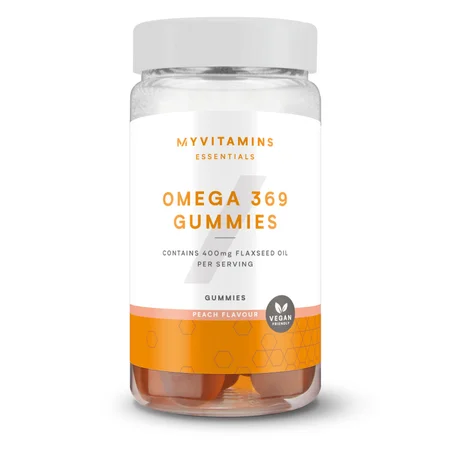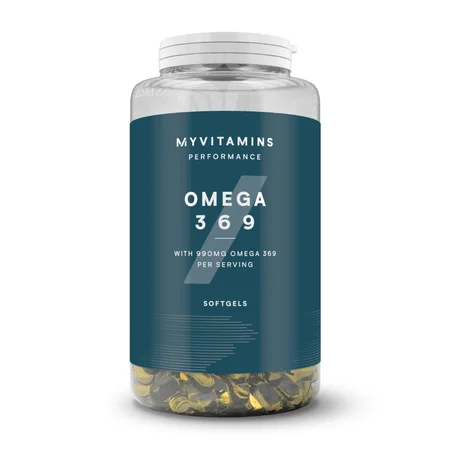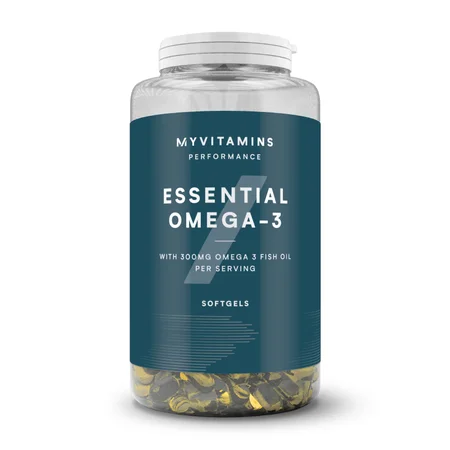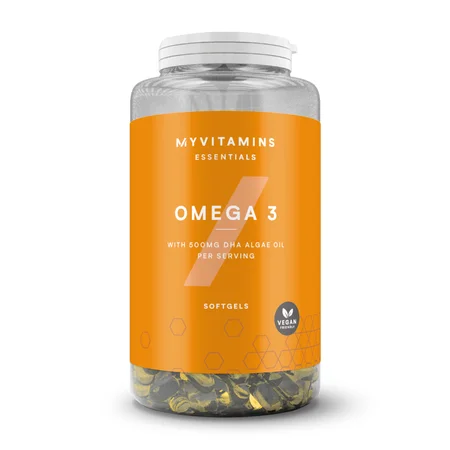
You have probably heard of or been told about eating foods rich in omega-3, 6, and 9 to keep you healthy.
Omega-3, 6, and 9 are vital to your health but what exactly are they, and what do they do? Do you really need them and how much? This article will cover what they are, how they will benefit your health, how you get them, and how much you need each.
- Omega-3 Fatty Acids
Omega-6 Fatty Acids Omega-9 Fatty Acids The Optimal Balance Between Omega-3, 6, and 9
Omega-3 Fatty Acids
Omega-3 fatty acids are polyunsaturated, fatty acids, or PUFAs, and are a group of fats that are vital for your health. They play important roles within the body from heart health, to the production of hormones in your body. There are three main types of omega-3 fatty acids: Alpha-linolenic acid (ALA), Docosahexaenoic acid (DHA) and Eicosapentaenoic acid (EPA).
ALA is an essential dietary fat which means you need to consume it in within your diet as your body cannot make it. It is also needed to make the other omega-3 fats, DHA, and EPA, which are long-chain fatty acids. Although ALA can be used to make DHA and EPA, it is recommended to still eat foods rich in these fatty acids due to a low conversion rate (1).
Omega-3 Benefits
As mentioned, omega-3 is a vital part of our diet. It plays a role in heart health, maintaining healthy blood vessels, helping your immune system, the development of infant's brains, and the creation of hormones.
In addition to these roles, there are other benefits omega-3 helps with, especially when it comes to preventative measures.
Reduce the Risk of Cardiovascular Disease
The consumption of foods rich in omega-3 has been found to possibly reduce your risk of cardiovascular/heart disease. This happens due to the triglyceride-lowering effects of omega-3 in the blood (2). Triglycerides are a type of fat that is present in the body and the biggest contributor to fat in the body.
It may also help reduce other factors leading to an increased risk of cardiovascular disease such as lowering blood pressure, reducing cholesterol levels, and reducing plaque caused by cholesterol (3).
Improved Symptoms of Arthritic Issues
Symptoms from arthritic issues have been found to have been improved through the consumption of omega-3, particularly fish oil supplements. The DHA and EPA in these supplements may help reduce joint pain and stiffness as well as boost the effectiveness of anti-inflammation medications (4).
Reduce Asthma in Children and Young Adults
As previously mentioned with arthritic issues, omega-3 fatty acids play a part in reducing inflammation which is the main cause of asthma attacks, when the inflammation and swelling narrow the airways to the lungs (5). The consumption of omega-3 may help lower the risk of asthma in children and young children, according to some studies.
Natural Sources of Omega-3
Omega-3 fatty acids can be found across multiple food groups; including both animal and plant-based options. It is important to ensure that we are getting enough of these fats in our diet, and the best way is to eat a varied and balanced diet. If you do not eat animal food sources, then it is especially important that you plan your diet carefully to ensure you include a variety of food sources.
Animal-Based Omega-3 Sources
Mackerel Salmon Kippers Trout Swordfish Crab - Grass-fed meat and dairy
Free-range eggs
Plant-Based Omega-3 Sources
Walnuts Pumpkin seeds Vegetable oils Soya products Chia seeds
Dosage and Side Effects
The recommended amount of omega-3 for an adult is about 450mg of EPA and DHA per day, which is the equivalent of one or two portions of fish per week.
Deficiency in omega-3 can result in dry skin, poor concentration, joint pain, weight gain, and eyesight problems whereas too much omega-3 can affect how long you bleed when injured.
Omega-6 Fatty Acids
Like omega-3, omega-6 is a polyunsaturated, fatty acid that is essential to our diets, and therefore we need to eat them. Omega-6 plays a large role in the health of the body’s cells, as well as growth and maintenance. There are four main omega-6 acids; Gamma-linolenic acid (GLA), Arachidonic acid (ARA), Linolenic acid (LA), and Conjugated Linolenic acid (CLA).
These omega-6 fatty acids can be found in numerous foods meaning it is rare to be deficient in it; in fact, due to how available they are in our diets, they are often over-consumed.
Omega-6 Benefits
The issue when it comes to omega-6 is getting the balance right between it and omega-3. Early humans were thought to consume a 1:1 ratio of omega-6 to omega-3 whereas, in today’s world, it’s closer to 10:1 or even 20:1 for some people.
The overconsumption of omega-6 can cause many health issues but that isn’t to say it doesn’t come without its benefits when the balance is right.
Stimulate Hair Growth
Relieves PMS Symptoms
For some women, the pain and irritation caused during menstruation can be excruciating. Some studies have found the omega-6 found in evening primrose oil can reduce the severity of PMS pain and other symptoms.

How To Manage PMS With Nutrition
Natural Sources of Omega-6
Omega-6 fatty can predominantly be found in plant-based foods, although they do occur naturally in animal sources. They can be found in abundance across a variety of processed foods such as cakes, cookies, and cooking oils, so it is important to choose healthy sources where possible.
Animal-Based Omega-6 Sources
Poultry - Lamb
- Pork
Eggs Goose/Duck fat
Plant-Based Omega-6 Sources
- Nuts
- Cereals
- Seeds
- Wholegrain bread
Vegetable oil
Dosage and Side Effects
Most people already get enough omega-6 in their diets, often consuming more than is required. Instead, increasing the consumption of foods rich in omega-3 is recommended.
Deficiency in omega-6 can lead to problems with your liver and kidneys, depression, skin dryness, and issues with your immune system. Whereas overconsumption of omega-6 can result in a variety of stomach issues (diarrhoea, indigestion, loss of appetite etc) as well as possibly raising triglyceride levels in the blood and causing inflammation.
Omega-9 Fatty Acids
Different to omega-3 and omega-6, omega-9 is a monosaturated, fatty acid that isn’t classed as an essential due to the body being able to produce it. Our bodies use omega-3 and omega-6 to produce a small amount of omega-9, and it is found in plentiful supply in the foods we eat. There are four main types of omega-9 fatty acids; Oleic acid, Mead acid, Erucic acid, and Nervonic acid.
It plays very similar roles in the body to omega-3 and omega-6, sharing similar benefits and sources.
Omega-9 Benefits
Omega-9 shares many of the health benefits of both omega-3 and omega-6, such as lowering blood pressure, cholesterol, and helping to clear plaque from arteries. There are other benefits possibly linked to omega-9 consumption.
Help Prevent Metabolic Syndrome
Metabolic syndrome is a cluster of conditions that occur together (10). The conditions include high blood pressure, high blood sugar, and abnormal triglyceride levels which could explain why omega-9 fatty acids may help with this condition.
Boosts Energy and Enhances Mood
One study found that reducing the ratio of saturated fatty acids to monounsaturated fatty acids affected the amount of energy used for physical activity as well as improving mood (11). It concluded that the oleic acid used during the trial was associated with an increase in physical activity, the participants having more energy and reduced anger.
Improves Immunity and Allergies
The anti-inflammation benefits of omega-9 mean it may help improve the body’s immunity, reduce inflammation and have a positive effect on those suffering from allergies. It has been suggested that those with low levels of omega-9 may be at a higher risk of developing a problematic allergy at some point in their life.
Natural Sources of Omega-9
Omega-9 is primarily found in olive oil; however, it does appear in a few animal-based sources as well as many other plant-based sources. Plant-based omega-9 sources are also affected through cooking so, where possible, it is best to consume them uncooked.
Animal-Based Omega-9 Sources
Salmon Mackerel - Herring
- Tuna
King prawns
Plant-Based Omega-9 Sources
Almonds - Cashews
- Olives
- Avocado
Walnuts
Dosage and Side Effects
There is no recommended amount for omega-9, with around 2-3 tablespoons of olive oil being a rough guide to the daily dose. It is the most common fat within our bodies, so supplementation isn’t needed if a balanced diet is followed.
There can be health issues related to the overconsumption of omega-9, especially erucic acid – this includes weight gain.
The Optimal Balance Between Omega-3, 6, and 9
Over the years, the balance between the amount of omega-3 and omega-6 we consume has changed, mostly due to the food industry and foods high in omega-6 being easy to include in our diets. Where previously, humans were consuming about equal quantities of both, we’re now consuming almost 20 times more omega-6 than omega-3.
The optimal balance should aim to return to those levels to promote good health. Consuming more foods rich in omega-3 such as oily fish, eggs, nuts, and seeds while trying to reduce the processed sources of omega-6 such as cakes, biscuits, and fast food. Instead, choose more natural sources like whole grains, nuts, and seeds.
If the balance between omega-3 and 6 is right, then there is nothing to worry about regarding omega-9 as the human body can create it and it is found in all the foods previously listed.
Take Home Message
For most people, a varied and balanced diet will give them all the omega 3, 6, and 9 they need. While omega 3 and 6 are essential fatty acids that our bodies need, many of us are already consuming too much of one and not enough of the other. It is recommended that all adults eat 1-2 portions of fish per week, at least one should be an oily fish, and reduce the number of processed foods we consume. There is no need to worry about omega-9 as that is synthesised in the body and can be found in plenty of the foods we eat. If you follow a plant-based diet, make sure you are planning meals with a variety of different sources.
Talk To Your Doctor
Before making a big change to your diet or taking any supplements, you should speak to your doctor. If you feel that you may be suffering from any deficiencies, please seek medical advice.
FAQs
What’s the difference between omega-3, 6, and 9?
Omega-3 and omega-6 are essential polyunsaturated fatty, omega-9 is a non-essential monosaturated fatty acid that the body can produce itself, as well as being found in the diet. All three omega fatty acids are needed by the body to perform a variety of functions and maintain health.
What are the benefits of omega-3, 6, and 9?
There are many potential benefits when it comes to omega-3, 6, and 9, especially for cardiovascular health. These include lowering blood pressure, lowering bad cholesterol, and removing plaque in arteries. There are potential links to improving conditions linked to the brain such as improved mood.
What are some of the natural food sources of omega-3, 6, and 9?
Oily fish is a great source for omega-3, 6 and 9, however, they can be found in a variety of different foods including plant-based foods. These include nuts, seeds, cereals, vegetable oils, fruits and vegetables.
What are the dosage and side effects of omega-3, 6, and 9?
Most people receive adequate amounts of omega-6 and 9 in their diets, whereas some struggle to consume enough omega-3. Adults should aim to have around 450mg of omega-3 per day which is roughly 1-2 portions of fish.
A reduction in omega-3 from processed sources is recommended to try and balance the ratios of omega-6 to 3.
Who should take omega-3, 6, and 9 supplements?
Anyone struggling to increase their intake of omega-3 should look at supplementing. There are some medical conditions where supplementation may be necessary. Talk to your doctor before making any major changes to your diet, especially if you feel that you may be deficient in any of the omega fatty acids.
Shop Omega Supplements
- Essential Fatty Acids | Linus Pauling Institute | Oregon State University
- Omega-3 Fatty Acids Facts (webmd.com)
- Cardiovascular disease – NHS (www.nhs.uk)
- Omega-3 Fatty Acids | AAFP
- Fish and Fish Oil Intake in Relation to Risk of Asthma: A Systematic Review and Meta-Analysis – PMC (nih.gov)
- Dietary fatty acids and colorectal cancer: a case-control study – PubMed (nih.gov)
- Omega-3 fatty acids for breast cancer prevention and survivorship – PMC (nih.gov)
- Omega-3 fatty acids in major depressive disorder: A preliminary double-blind, placebo-controlled trial – ScienceDirect
- Omega-6 fatty acid biomarkers and incident type 2 diabetes: pooled analysis of individual-level data for 39 740 adults from 20 prospective cohort studies – ScienceDirect
- Metabolic syndrome – NHS (www.nhs.uk)
- Substituting dietary monounsaturated fat for saturated fat is associated with increased daily physical activity and resting energy expenditure and with changes in mood – PMC (nih.gov)
- The memory-enhancing effect of erucic acid on scopolamine-induced cognitive impairment in mice – PubMed (nih.gov)












